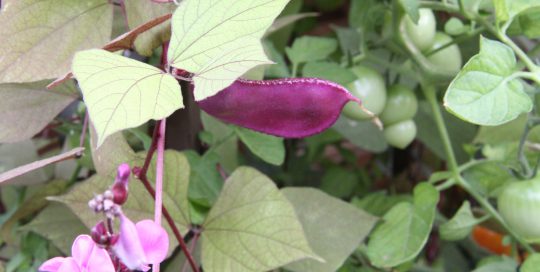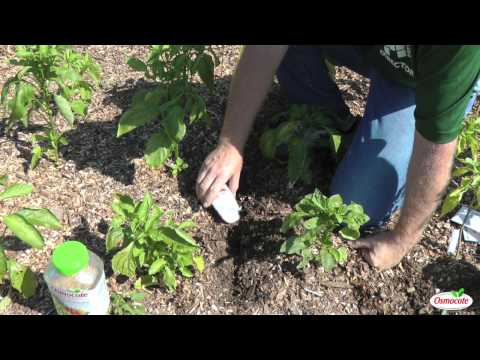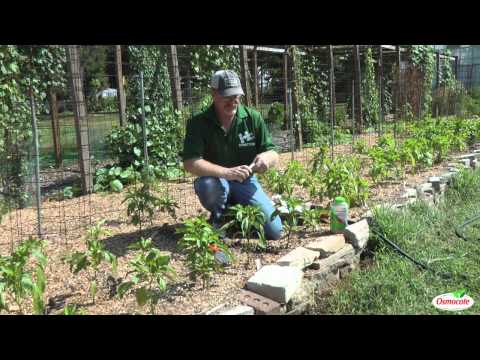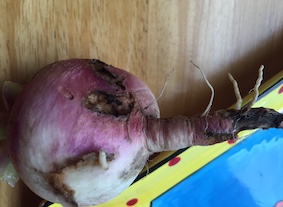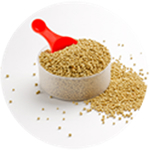While they may not get quite as many magazine covers as the tomato, or rule the current foodie scene, root vegetables are among the easiest- and tastiest- plants to grow in your backyard garden. Carrots, beets, and radishes are some of the most common choices. With good reason- they are hardy, can be planted outdoors in early spring and left until fall. They can be used in the kitchen for everything from soups to salads to afternoon snacks. In addition to better flavor, the selection available for growing at home is diverse, (Purple carrots! Black radishes!). More so than anything you’ll find in the produce section.
Prepping and Planting
Proper soil preparation is one of the keys to successfully growing root vegetables. Beds should be well-drained, free of stones, and tilled to a depth of at least 8-10 inches to allow roots to push down into the earth. Growing root crops in a raised bed is another way to make sure soil is loose and free of debris. Avoid using compost or well-rotted manure in your vegetable bed. It can have the undesirable effect of causing roots to branch out or “fork”. This leaves you with some funny looking two-legged carrots come harvest time.
Root vegetables are typically direct sown from seeds in the garden in early spring, 3-4 weeks before the date of the last frost. To ensure they have room to develop properly, crops should be thinned to a spacing of approximately 2-inches. Once they reach a small, edible size, (or about an inch or two tall), go ahead and pluck them out. Reward yourself with a diminutive, (but darling!), tray of crudités.
Carrots
Few things give me as much pleasure as pulling carrots, crumbs of dirt still clinging to their sides, from the veggie patch. Whether they’re classic orange, white, red, yellow, or purple; carrots are a quintessential component of the backyard garden. Carrots are an excellent source of anthocyanin, beta-carotene, and lycopene. They’re a fun crop to grow and harvest with children, or for those of us who just like to indulge our Beatrix Potter complex. When eaten fresh, carrots are a wonderful snack. They can be tossed into soups and stews, grated and used in salads, or baked goods, and even juiced. While they can be found in a number of sizes and shapes, carrots are grouped into five main categories: Danvers, Nantes, Chantenay, Imperator, and Ball (or Mini).
Danvers: Developed in Danvers, Massachusetts in the late 1800’s, the Danvers is what comes to mind when most of us think of carrots. Typically, flesh is orange, though other colors can be grown as well. They are long, (about 6-8 inches), and skinny with broad “shoulders” that taper to a pointed tip. Danvers carrots can be grown with some success in poor or heavy soils. They are excellent eaten fresh, and they hold up well when cooked.
Cont.
Nantes: Like the Danvers, Nantes carrots grow to a medium length of about 6-8 inches. Unlike the Danvers, Nantes are almost perfectly cylindrical in shape, with essentially no taper and a rounded top and tip. Named after the region in France where they originated, Nantes carrots are crisp and sweet, and often have a deep reddish-orange flesh. These carrots are quick to mature, and can be planted in late spring for a summer harvest.
Chantenay: A bit shorter in length than the Danvers or Nantes, Chantenay carrots only reach 5-6 inches, allowing them to be grown successfully in containers or heavier soils. They don’t push quite as deep into the ground. They have wide shoulders that taper into tips. Chantenay carrots also have a coarser texture than some of the other types. Harvest them in a timely fashion for the best flavor.
Imperator: Most similar in appearance to the Danvers, Imperator carrots are long, (8-10 inches!). They have a smooth body and narrow shoulders tapering into tips. These carrots are high in sugar, store well, and can be eaten fresh or processed. They are often grown commercially for sale in grocery stores throughout the United States.
Ball: As their name suggests, these are globe-shaped miniature carrots. They are small, (typically only 1-1/2 to 2 inches in diameter), and round. Ball carrots resemble a little orange radish more than a traditional carrot. They are an excellent choice for containers. they have short roots that don’t require much growing space. Plus, their foliage is edible as well. They’re a perfect choice for snacking and salads.
Beets
Closely related to spinach and Swiss chard, beets are a fast-growing cool-season vegetable with edible greens and roots that come in shades of red, yellow, and white. There are even striped varieties! Beets thrive in full sun and well-drained soil. They grow quickly, and can withstand frost and temperatures near freezing. This culminates in making them a mainstay for northern gardeners. Beet roots can be baked, boiled, roasted, eaten raw, pickled, or juiced. They are rich in nutrients like betalains, fiber, and folate. Beet greens are delicious (and nutritious!) cooked or eaten raw as well.
Unlike many root vegetables, beets can be started inside from seeds and transplanted into the garden in spring. Although, it’s easier to simply sow them directly outdoors. Beds should be weeded and watering must be consistent to avoid roots with a hard stringy texture. Covering with a layer of mulch after planting will help prevent weeds. Keep soil cool and moist. Beets can be harvested when they reach anywhere from and 1-4 inches in diameter. However, harvesting when roots are smaller tends to result in better flavor and texture. When trimming greens from the top, be careful to leave a couple inches of stem to prevent roots from “bleeding.” Keep the greens for use in salads and sautés.
Radishes
Often overlooked, or cast aside as a mere garnish, radishes are a particular favorite of mine. Everything from their rosy hue to their crunchy snap and peppery kick they add to dishes makes these little gems a worthwhile addition to the veggie patch. And the greens are edible too! Like the other root vegetables, radishes are a cool weather crop that prefers full sun and well-drained soil free of rocks and debris. If you grow them when the weather is too hot, the radish root will taste hotter as well, so aim to grow them in spring and fall when soil temperatures are cooler.
Radishes are a good choice for companion planting with other vegetables, as they grow very quickly and their odor is thought to deter a number of insect pests. They are generally categorized into two main groups: spring/summer and winter. The spring/summer varieties, with names like “Cherry Bomb” and “French Breakfast,” mature quickly, and should be planted as early as possible in the spring while the weather is still cool to get the best quality produce. Winter varieties are slower growing, but they are larger, store better than their springtime counterparts, and have a spicy flavor and crisp texture. Plant these in mid-late summer and they will mature in the cooler autumn temperatures.
Plant care
Radish beds should be kept consistently moist to avoid roots that are cracked. Regular watering will also prevent radishes from growing too slowly, which, like warm soil temperatures, can result in a hotter flavor. When spring/summer radish roots reach about an inch in diameter, they are ready to be harvested. Don’t delay! These are best when harvested small and tender, and, WARNING: they won’t remain edible if left in the soil for too long. Winter radishes can be left to mature a bit longer, and gathered when they are larger in size. Pull the plants out of the ground, clean them off, and store them in the fridge or another cool dark location. You can even slice them up and eat immediately with a little butter and a sprinkle of sea salt for the perfect post-harvest treat.


